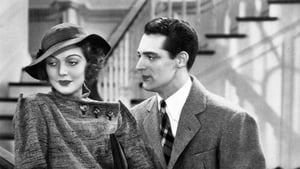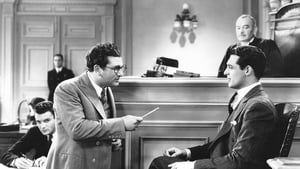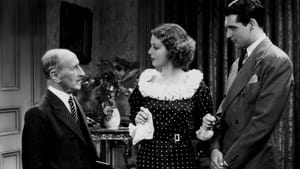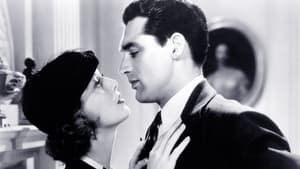Contact: info@alwanfilm.com
Video Sources 0 Views
- Born to Be Bad

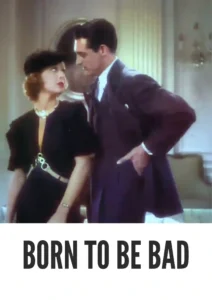
Synopsis
Table of Contents
ToggleReview: Born to Be Bad 1934 Colorized – A Gripping Tale of Love, Ambition, and Betrayal

Introduction
“Born to Be Bad” (1934) stands as a captivating example of classic Hollywood cinema, weaving a tale of love, ambition, and betrayal against the backdrop of the roaring twenties. In this review, we’ll explore the significance of this early cinematic gem and its enduring legacy in the annals of film history.
Check The Full Colorized Movies List
Check Our Colorized Movies Trailer Channel
Understanding Born to Be Bad 1934 Colorized Director, Cast, and Genre
Directed by Lowell Sherman, “Born to Be Bad” (1934) showcases his adeptness in crafting compelling narratives that resonate with audiences. The film boasts a talented cast, including Loretta Young and Cary Grant, whose performances breathe life into the characters and propel the story forward with passion and intensity. Blending elements of romance, drama, and suspense, “Born to Be Bad” (1934) captivates viewers with its riveting plot and unforgettable characters.
Exploring the World of Born to Be Bad 1934 Colorized: Plot and Characters
At its core, “Born to Be Bad” (1934) follows the journey of a young woman, played by Loretta Young, whose ambition and determination lead her down a dangerous path of deceit and manipulation. Along the way, she encounters a charismatic businessman, portrayed by Cary Grant, whose allure proves irresistible despite the risks involved. As the stakes escalate and loyalties are tested, the stage is set for a showdown that will determine the fate of all involved.
The Art of Film Colorization
While “Born to Be Bad” (1934) was originally filmed in black and white, its timeless themes and compelling characters lend themselves well to the colorization process. By adding color to the film’s richly detailed sets and glamorous costumes, colorization breathes new life into the story, allowing audiences to experience the glamour and excitement of the roaring twenties in vibrant hues.
Early Colored Films: A Brief History
The history of colored films dates back to the early days of cinema, with filmmakers experimenting with various techniques to add color to their creations. From hand-tinted frames to early Technicolor processes, the evolution of colored film has been marked by innovation and creativity, paving the way for the development of modern colorization techniques that continue to captivate audiences to this day.
Born to Be Bad 1934 and Its Early Colored Version
The decision to release “Born to Be Bad” (1934) in a colorized format was met with both excitement and skepticism. While some welcomed the opportunity to experience the film in vibrant color, others expressed concerns about the potential impact on its visual aesthetic. Nevertheless, the early colored version of “Born to Be Bad” (1934) offers viewers a fresh perspective on the classic tale of love and ambition, enhancing its immersive qualities and captivating audiences with its luminous beauty.
The Debate Over Film Colorization
The debate over film colorization is a complex and multifaceted issue, with passionate arguments on both sides of the divide. Proponents argue that colorization revitalizes classic movies for modern audiences, breathing new life into timeless stories and introducing them to a new generation of viewers. Conversely, detractors maintain that colorization detracts from the authenticity of the original work, altering the director’s artistic intent and diminishing the historical significance of the film.
Examining Born to Be Bad 1934 as an Early Colored Film
As with any colorized classic, the impact of colorization on “Born to Be Bad” (1934) is a matter of personal interpretation. Some may argue that it enhances the film’s visual appeal and immerses viewers in its world, while others may feel that it detracts from the stark beauty of the original black and white version. Regardless of one’s stance on the issue, there’s no denying the enduring power of “Born to Be Bad” (1934) as a timeless classic that continues to captivate audiences with its compelling story and unforgettable characters.
Influence and Legacy: Born to Be Bad 1934 Colorized’s Impact on Cinema
“Born to Be Bad” (1934) has left an indelible mark on the world of cinema, inspiring countless filmmakers and captivating audiences with its timeless tale of love and ambition. From its gripping plot to its stellar performances, the film continues to resonate with viewers of all ages, reaffirming its status as a beloved classic of the romantic drama genre.
Director’s Cinematic Legacy: Beyond Born to Be Bad 1934 Colorized
Lowell Sherman’s influence extends far beyond “Born to Be Bad” (1934), with a diverse body of work that continues to captivate audiences around the globe. From “Morning Glory” to “She Done Him Wrong,” Sherman’s films are celebrated for their compelling narratives, dynamic characters, and timeless themes, solidifying his legacy as one of the preeminent directors of Hollywood’s Golden Age. Through his groundbreaking work, Sherman has left an indelible imprint on the world of cinema, inspiring generations of filmmakers to follow in his footsteps.
Themes Explored in Born to Be Bad 1934 Colorized
“Born to Be Bad” (1934) explores a myriad of themes, from the allure of ambition to the consequences of betrayal. Through its richly drawn characters and nuanced storytelling, the film invites viewers to ponder the complexities of human nature and the choices that shape our destinies. As audiences immerse themselves in the world of “Born to Be Bad” (1934), they are reminded of the timeless truths that bind us together and the enduring power of love to conquer even the greatest of obstacles.
Reception and Controversy Surrounding Born to Be Bad 1934 Colorized
Upon its release, “Born to Be Bad” (1934) received widespread critical acclaim, with many praising its gripping plot, stellar performances, and stylish cinematography. However, the decision to release the film in a colorized format sparked debate among purists, reigniting the age-old discussion surrounding film preservation and artistic integrity. Despite the controversy, “Born to Be Bad” (1934) remains a beloved classic that continues to resonate with audiences of all ages, reaffirming its status as a timeless masterpiece of the romantic drama genre.
Where to Watch Born to Be Bad 1934 Colorized Online
For those eager to experience the timeless magic of “Born to Be Bad” (1934), the film is readily available on popular streaming platforms such as Netflix, Amazon Prime, and Hulu. Whether you choose to watch it in its original black and white format or the early colored version, “Born to Be Bad” (1934) promises to transport you to a world of romance and intrigue, where love and ambition collide in the most unexpected of ways.
FAQs About Born to Be Bad 1934 Colorized
Q: Is “Born to Be Bad” (1934) based on a true story? A: No, “Born to Be Bad” (1934) is a fictional tale crafted by screenwriters Ralph Graves and Edith Fitzgerald, who drew inspiration from the tumultuous events of the roaring twenties.
Q: Who are the main actors in “Born to Be Bad” (1934)? A: “Born to Be Bad” (1934) features an ensemble cast led by the talented Loretta Young and Cary Grant, whose electrifying performances bring the characters to life with passion and intensity.
Q: What awards did “Born to Be Bad” (1934) win? A: While “Born to Be Bad” (1934) did not win any major awards, it received critical acclaim for its gripping plot, stylish cinematography, and stellar performances.
Q: Why was “Born to Be Bad” (1934) released in a colorized format? A: The decision to release “Born to Be Bad” (1934) in color was made to introduce the film to a new generation of viewers and enhance its visual appeal for modern audiences. While the choice to colorize the film sparked debate among purists, it ultimately allowed “Born to Be Bad” (1934) to reach a wider audience and ensure its continued relevance in the annals of cinematic history.
Conclusion
As we reflect on the enduring legacy of “Born to Be Bad” (1934), let us celebrate its status as a timeless classic that continues to captivate audiences with its gripping plot, unforgettable characters, and breathtaking cinematography. Whether viewed in its original black and white format or the early colored version, “Born to Be Bad” (1934) remains a shining example of the power of cinema to inspire, entertain, and provoke thought.
